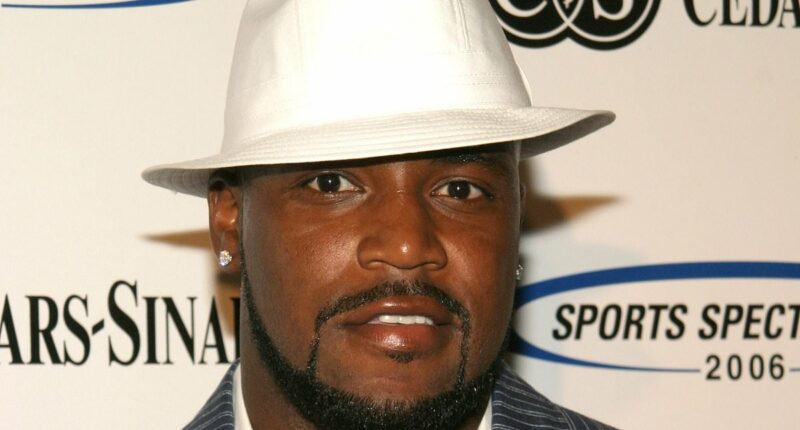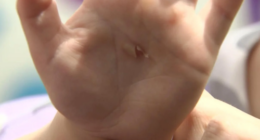Share this @internewscast.com
Disturbing details have emerged from the moments following former NFL star Rudi Johnson’s tragic suicide, captured in a series of alarming 911 calls from concerned neighbors.
The callers, whose identities remain undisclosed, were residents of Sunny Isles, Florida. They contacted 911 after hearing a commotion and a loud noise, later identified as Johnson leaping to his death from a nearby building.
“It must have been at least from the tenth floor or something,” one woman informed the 911 operator. “Someone was screaming, ‘Help me! Help me!’ – really loudly,” she said.
‘So I looked over and I saw somebody just completely falling off the balcony. I don’t know if they jumped or got pushed.’
She also said she heard onlookers yelling: ‘Don’t do this!’
Another woman didn’t witness the fall, but heard the noises before calling 911.

Rudi Johnson set the Bengals’ single-season rushing record in 2005 with 1,458 yards
“I just heard people screaming and a huge thump – like a bang,” she explained to the 911 operator on September 22, as reported in calls first unveiled by TMZ.
The distressed and bewildered woman told the 911 operator she was ‘not stepping out’ of her apartment to investigate but mentioned she ‘heard people screaming for help’ from a pool outside her building.
At one point the woman asked her son what he heard before sternly warning: ‘Do not go outside!’
‘Do you know how long before they get here?’ she asked the operator about the police. ‘Something is happening in the pool.
‘I heard a lot of screaming,’ she continued. ‘My daughter heard a lot of screaming… And then a huge boom.’
TMZ reports five 911 calls were made about the incident.
No foul play is suspected, according to Miami-Dade police.
Johnson’s family recently honored him with a Miami Beach ceremony on what would have been his 46th birthday.
His agent, Peter Schaffer, mentioned to NBC that he hopes this tragedy will spur further research into chronic traumatic encephalopathy (CTE), a degenerative brain condition widely believed to be triggered by repeated head injuries.
‘These tragic circumstances must also serve as a call to action,’ Schaffer said in a statement. ‘The NFL and the scientific community must do more — more research into CTE, more innovation into how we can treat it, prevent it, and provide support to those living with it. Players past, present, and future deserve nothing less.’
He was part of a productive backfield at Auburn that also included future NFL players Heath Evans and Ronnie Brown. Playing under current Alabama senator and long-time Tigers coach Tommy Tuberville, Johnson burst out for 1,567 yards and 13 touchdowns in 2000 as Auburn went 9-4 and finished 18th in the final AP poll.

Rudi Johnson launched his own charity in 2005 aimed at helping struggling families
Although he fell to the fourth round in the NFL draft and battled injuries for his first two pro seasons, Johnson busted out again in 2003, rushing for 957 yards as the Bengals finished 8-8 under head coach Marvin Lewis.
Johnson would surpass 1,300 rushing yards and score a dozen touchdowns in each of the next three seasons while earning a reputation as one of the toughest backs in football.
He ultimately retired in 2008 after a season with the Detroit Lions, but not until after launching his charity, the Rudi Johnson Foundation, in 2005 to help struggling families.
Johnson was recently inducted into the Chesterfield (Virginia) Sports Hall of Fame and left some touching advice for aspiring athletes in the area.
‘I just want to say: dream big, shoot for the stars, stay focused, never give up,’ he said. ‘And one more thing: For the all kids from Chesterfield County, I’ll be watching for the next star to be born.’





